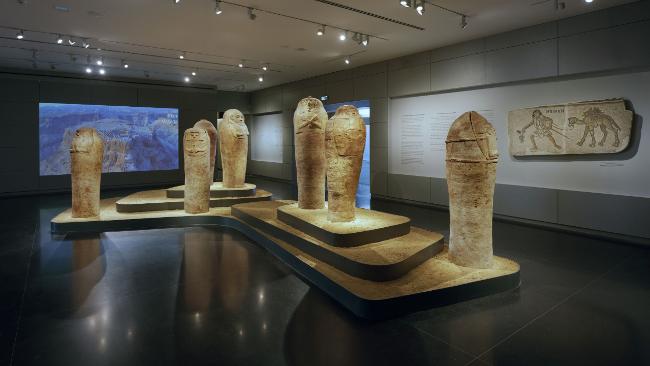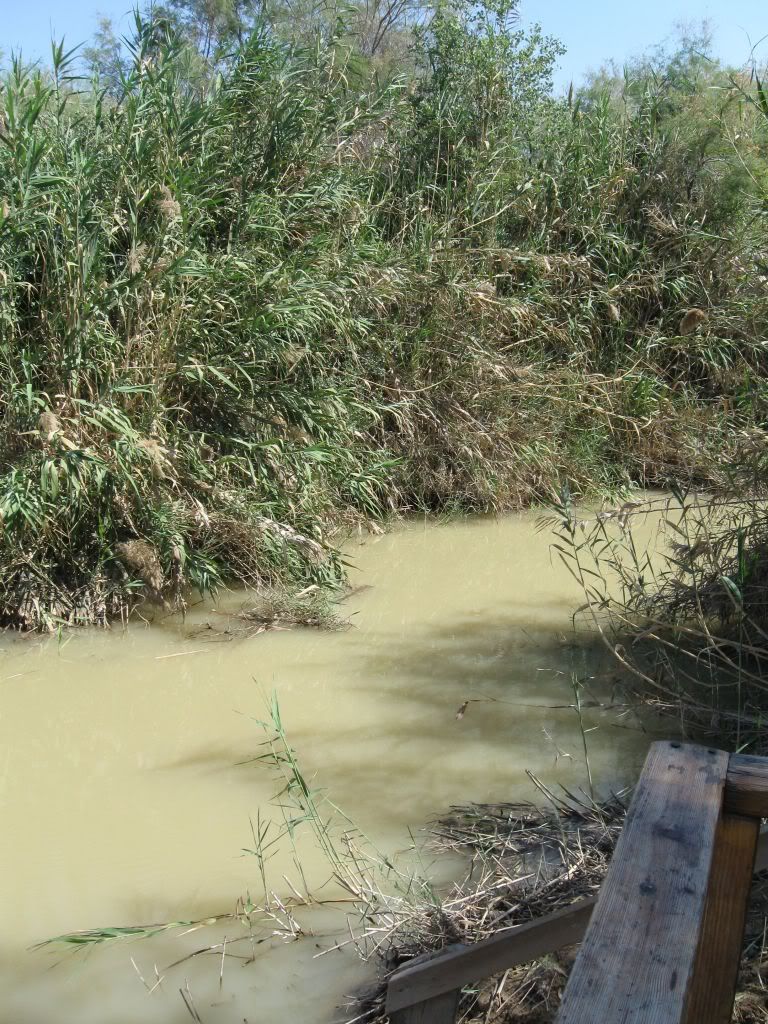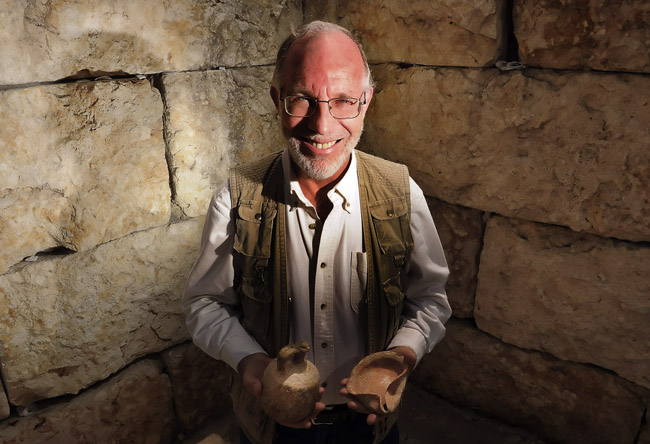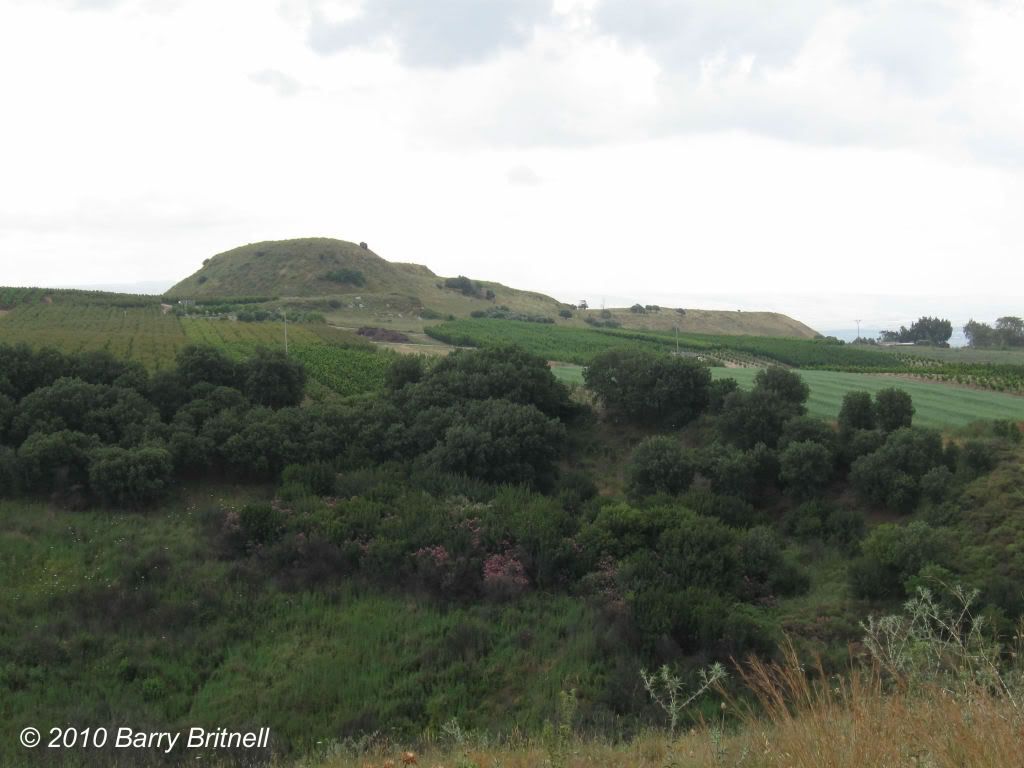Seth M. Rodriguez from BiblePlaces.com featured a picture today from Todd Bolen's Pictoral History of Bible Lands Collection. It is a fantastic aerial photograph showing the relationship between Mount Hermon and the town of Caesarea Philippi.
A quote from Seth's blog reads:
In this photo, the immense size of Mount Hermon can be clearly seen while it dwarfs the remains of the ancient city of Caesarea Philippi (located at the bottom center of the photo). The ruins of the Crusader period castle of Nimrud can also be seen sitting on the ridge above Caesarea Philippi in the upper right quadrant of the photo.
This shot is helpful for a number of reasons. First, it gives the viewer an appreciation for the massive size of Mount Hermon. With its peak reaching an altitude of 9,230 feet (2,814 meters), it is almost three times the height of any other peak in the territory of ancient Israel. Secondly, it shows the geographical relation between the castle of Nimrud and Caesarea Philippi. Although I have visited both sites a number of times, the fact that they were both built on the same ridge escaped my notice until I saw this picture. However, those two reasons are not why I decided to feature this picture in today's post.
The third and most valuable reason is that it can be used effectively as an illustration when teaching or preaching on the Transfiguration of Jesus. The Transfiguration occurs in Matthew 16:28-17:9, Mark 9:1-9, and Luke 9:27-36. In each of those books, the event is immediately preceded by the discussion that Jesus had with his disciples where Peter declared, “You are the Christ, the Son of the Living God.” Matthew and Mark tell us that this conversation occurred in the region (or district) of Caesarea Philippi (Matt. 16:13; Mark 8:27).
A few days later, Jesus took Peter, James, and John up on a mountain where He was transformed in front of them. Matthew and Mark describe the location as “a high mountain” (Matt. 17:1; Mark 9:2), and Luke refers to it as “the mountain” with a definite article (Luke 9:28). Looking at this photograph it is not hard to see which mountain the gospel writers had in mind. If they were in the region of Caesarea Philippi and they went up a high mountain … indeed the most noteworthy mountain in the area … then it is not difficult to figure out which mountain was intended. Over the years, some have interpreted the “mountain” in these passages as referring to Mount Tabor on the eastern edge of the Jezreel Valley, but given the geographical indicators provided in the text, Mount Hermon is a more likely candidate.
To visualize the point Seth is making, examine the map below. The red marker is located on the city of Caesarea Philippi, the blue marker is on Mount Hermon and the purple marker is on Mount Tabor. Given the distance from Caesarea Philippi, I agree with Seth that Mount Hermon is a more likely candidate for the site of the Transfiguration than Mount Tabor.
[google-map-v3 width="640" height="480" zoom="12" maptype="terrain" mapalign="center" directionhint="false" language="default" poweredby="false" maptypecontrol="true" pancontrol="true" zoomcontrol="true" scalecontrol="true" streetviewcontrol="true" scrollwheelcontrol="false" draggable="true" tiltfourtyfive="false" addmarkermashupbubble="false" addmarkermashupbubble="false" addmarkerlist="33.247984,35.694387{}4-default.png{}Caesarea Philippi|33.412242,35.854912{}5-default.png{}Mount Hermon|32.68692,35.389194{}6-default.png{}Mount Tabor" bubbleautopan="true" showbike="false" showtraffic="false" showpanoramio="false"]




















 A little over two years ago, my wife and I took a trip to Israel and Jordan to see some of the lands mentioned in the Bible. Those ten days were amazing and completely changed the way that we read the Bible. We used to read over the geographical locations. Now, we pause to consider how that relates to the stories. For most of my life, I knew the Bible stories. Now, I understand them.
I have been able to answer many Biblical questions that I did not even realize that I needed to ask. Questions like:
A little over two years ago, my wife and I took a trip to Israel and Jordan to see some of the lands mentioned in the Bible. Those ten days were amazing and completely changed the way that we read the Bible. We used to read over the geographical locations. Now, we pause to consider how that relates to the stories. For most of my life, I knew the Bible stories. Now, I understand them.
I have been able to answer many Biblical questions that I did not even realize that I needed to ask. Questions like: